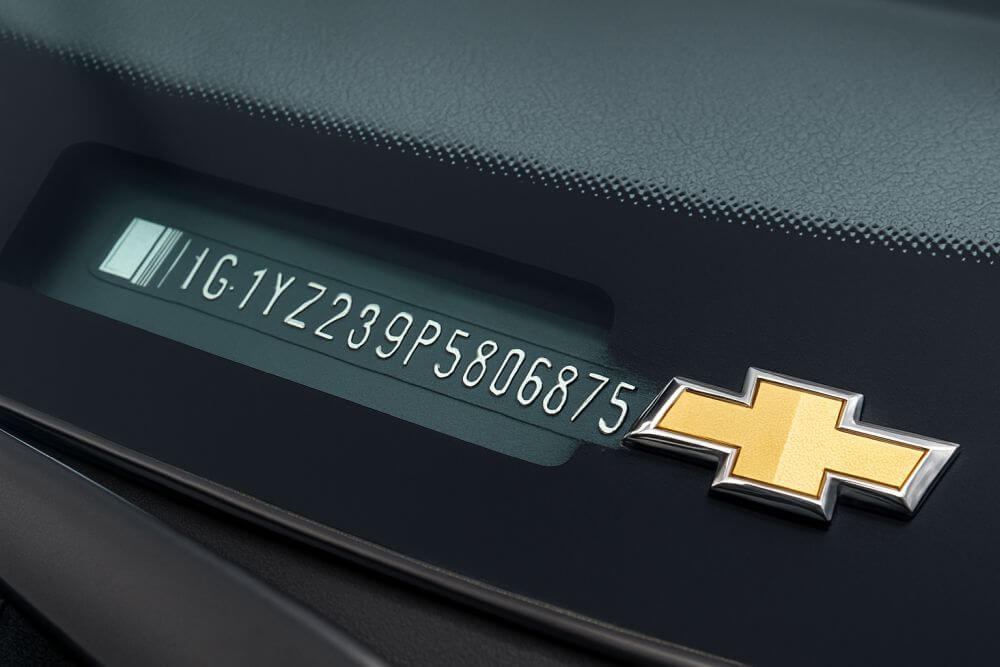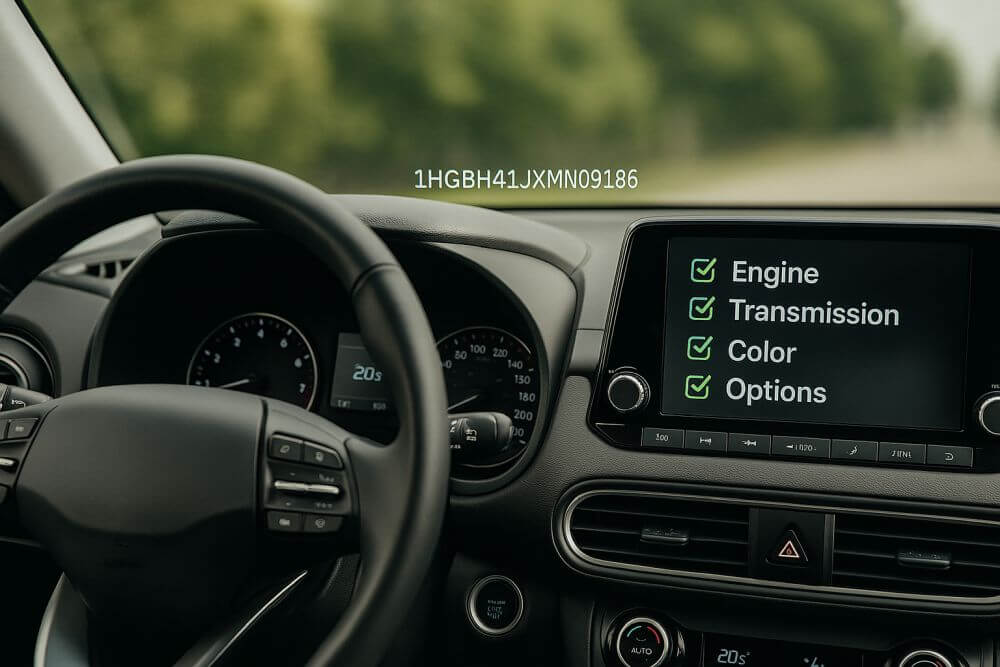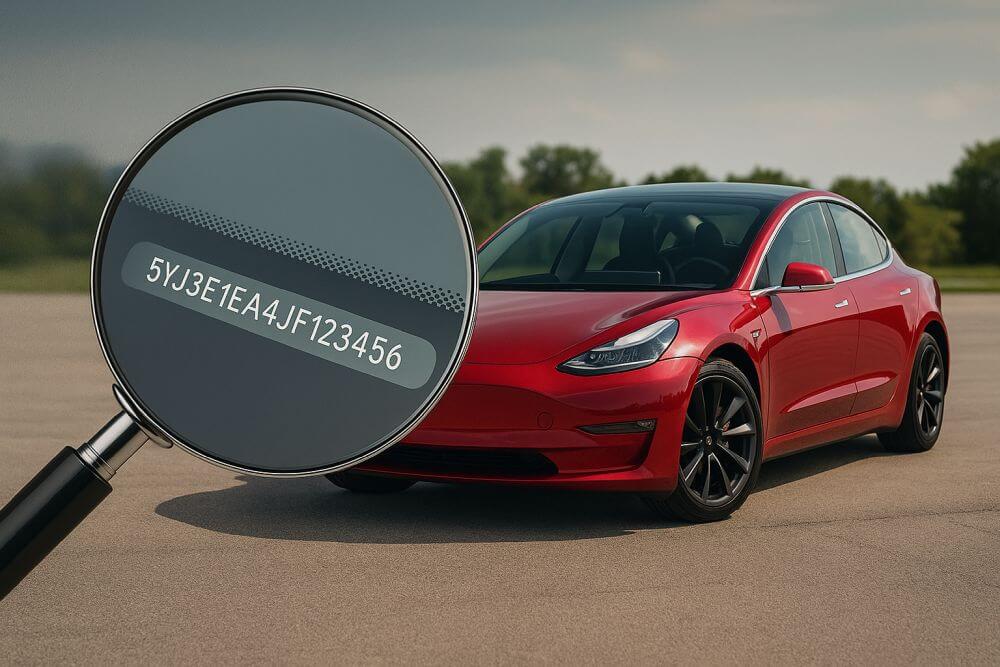Whether you’re shopping for a used Chevy or trying to better understand the one you already own, there’s a lot of value in learning how to decode a Chevrolet VIN (Vehicle Identification Number).

That string of 17 characters stamped on the dash isn’t just a random mix of numbers and letters—it holds the entire DNA of the vehicle, including key specs like:
- Engine type and displacement
- Trim level and series
- Transmission
- Assembly plant
- Country of origin
- Model year
- Factory-installed options
In this beginner-friendly guide, we’ll walk you through how to decode a Chevy VIN, what each section means, and how to uncover your vehicle’s factory build sheet without calling a dealership.
What Is a Chevrolet VIN?
A Vehicle Identification Number (VIN) is a unique code assigned to every Chevrolet vehicle during production. It’s like a fingerprint—no two VINs are alike, and the information stored in this code never changes throughout the life of the vehicle.
Starting in 1981, all automakers (including General Motors and Chevrolet) adopted a standardized 17-character VIN format, which includes both numbers and letters.
You’ll find the VIN in several places:
- Driver’s side dashboard (visible through windshield)
- Inside the driver’s door jamb
- On the vehicle title and registration
- On insurance cards and policy documents
- On service records or inspection reports
📌 Tip: Always check that the VIN on the vehicle matches what’s on the paperwork. Mismatches are a red flag for fraud or title washing.
Chevrolet VIN Structure Explained
Let’s break down what each section of a 17-digit Chevy VIN means:
Example VIN: 1G1ZD5ST5JF187623
| Section | Digits | Meaning |
|---|---|---|
| WMI (World Manufacturer Identifier) | 1–3 | Manufacturer and country of origin (e.g., 1G1 = Chevrolet passenger car made in the U.S.) |
| VDS (Vehicle Descriptor Section) | 4–8 | Model, body style, engine type, safety equipment, series/trim |
| Check Digit | 9 | Validates the VIN using a mathematical formula |
| Model Year | 10 | Vehicle model year (e.g., J = 2018) |
| Assembly Plant | 11 | Where the vehicle was built (e.g., F = Fairfax, Kansas) |
| Serial Number | 12–17 | Unique production number for that vehicle |
Key Features You Can Reveal by Decoding a Chevrolet VIN
By entering your VIN into a trusted decoder, you can access a full snapshot of your vehicle’s original build, including:
1. Engine Size and Type
Want to know if your Malibu has a 1.5L turbo or 2.0L turbo engine? Or whether your Silverado 1500 has a V6, V8, or Duramax diesel?
The 8th digit of the VIN reveals your engine code, and when decoded correctly, it tells you:
- Number of cylinders
- Displacement (in liters or cubic inches)
- Fuel type (gasoline, diesel, flex-fuel, etc.)
- Turbocharged or naturally aspirated
- Horsepower output (factory rated)
This is incredibly useful when buying used or verifying what’s under the hood before purchasing parts.
2. Trim Level and Series
Chevrolet vehicles often come in multiple trims, from base models to performance or luxury editions:
- LT, LS, RS, Z71, ZL1, High Country, Premier, and more.
The 4th through 6th digits of the VIN identify these designations. Combined with the engine and body style codes, this helps you pinpoint whether your Equinox is an LS or an LTZ—or if a Camaro is a 1LT, 2SS, or ZL1.
3. Transmission Type
Knowing whether your vehicle came with a manual, 6-speed automatic, 8-speed, or 10-speed transmission can affect everything from maintenance cost to aftermarket modifications.
This information is typically encoded in the VDS section (positions 4–8) and sometimes confirmed by cross-referencing the full build sheet.
4. Assembly Plant
Chevrolet has manufacturing facilities in:
- Fairfax, Kansas
- Lansing, Michigan
- Bowling Green, Kentucky (Corvette)
- Silao, Mexico
- Oshawa, Ontario (Canada)
The 11th digit of your VIN tells you exactly where the vehicle was assembled.
Why it matters: In rare cases, this can help determine build quality, recalls, or resale value, as some buyers prefer U.S.-assembled models.
5. Model Year
The 10th digit is a single character that represents the model year.
| Code | Year |
|---|---|
| A | 2010 |
| D | 2013 |
| G | 2016 |
| J | 2018 |
| M | 2021 |
| P | 2023 |
…and so on.
This is especially helpful if you’re unsure whether a vehicle is a late-year release or early build of the following year (common with trucks and SUVs).
Why Decode a Chevy VIN?
Here’s what you can do with a decoded Chevrolet VIN:
- Verify vehicle specs before buying
- Confirm trim level and engine match seller’s claims
- Find the right parts for repair or upgrade
- Detect VIN cloning or fraud
- Access auction history or original MSRP info
- Cross-reference recalls or service bulletins
Use Our Free Chevrolet VIN Decoder to View Your Car’s Original Factory Specs Instantly
You don’t need to be a mechanic or contact the dealer to access this info.
Just head over to:
👉 https://www.vincheckpro.com/vindecoder/free-chevrolet-vin-decoder/
Enter your 17-digit VIN and get a detailed factory specs breakdown for your Chevy model—instantly and 100% free.
This tool taps into a network of OEM data sources, registration records, and automotive specification databases to provide:
- Engine and drivetrain info
- Trim series and package options
- Original color
- Factory features (e.g., sunroof, infotainment, towing package)
- Market value estimates
📍 Use our Free Chevrolet VIN Decoder to view your car’s original factory specs instantly
What a VIN Decoder Can’t Tell You (Without a History Report)
While a VIN decoder reveals what your Chevy was built with, it doesn’t show:
- Accident history
- Title branding (salvage, rebuilt, etc.)
- Odometer rollbacks
- Lien or loan status
- Theft history
- Registration lapses
For that, you’ll want to run a free VIN history check through:
👉 https://www.vincheckpro.com/
This helps validate not just what the vehicle is, but also where it’s been.
Chevy Models You Can Decode with This Tool
VinCheckPro’s decoder supports all modern Chevrolet models including:
- Chevy Silverado 1500, 2500, 3500
- Chevy Equinox, Traverse, Trailblazer, Blazer
- Chevy Camaro, Corvette, Malibu, Impala
- Chevy Colorado, Suburban, Tahoe
- Chevy Bolt, Volt, Sonic, Cruze, Spark
…and everything else from the GM lineup going back several decades.
Final Thoughts: The VIN Is Your Shortcut to the Truth
In the age of used car shopping and auction buying, knowing exactly what you’re getting isn’t just helpful—it’s essential.
Learning how to decode a Chevrolet VIN empowers you to:
- Buy smarter
- Avoid scams
- Understand your vehicle better
- Service or modify with confidence
And the best part? You can do it right now, for free.
Use our Free Chevrolet VIN Decoder to view your car’s original factory specs instantly
You’ll get a full breakdown of engine, trim, build location, and more—no dealer calls, no downloads, no waiting.


